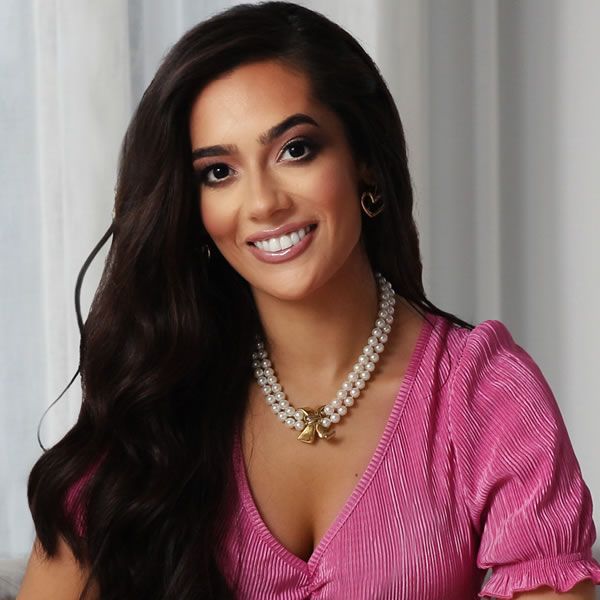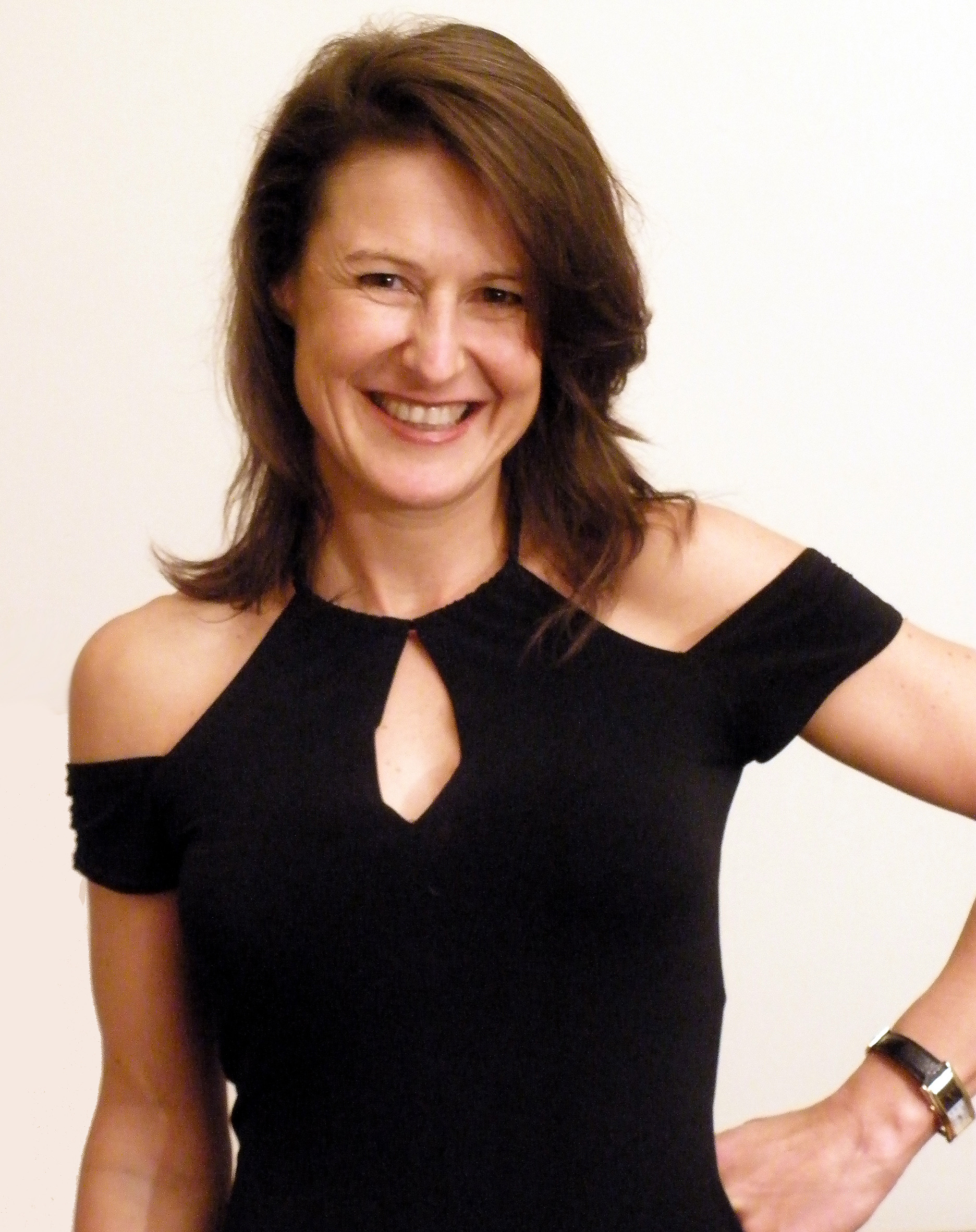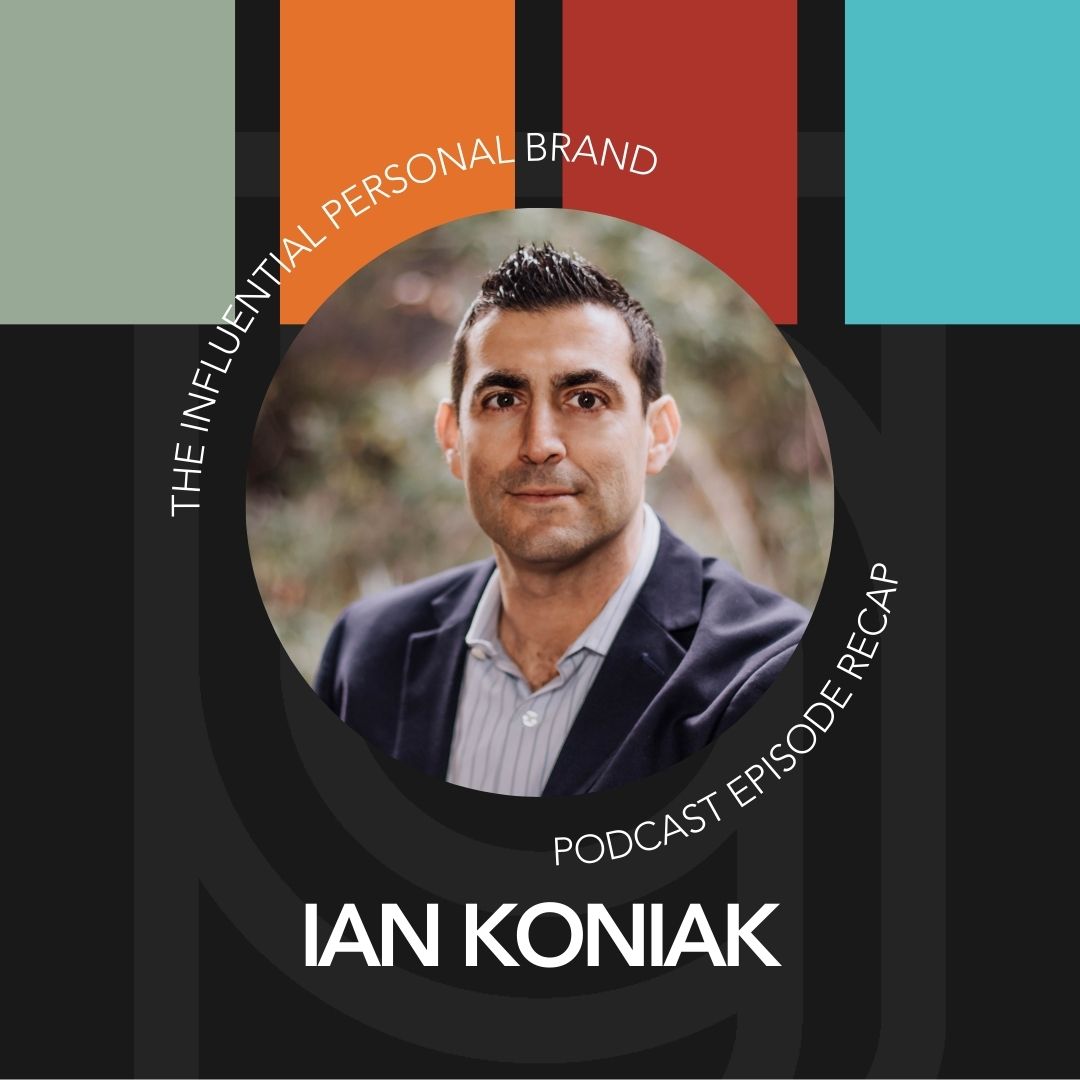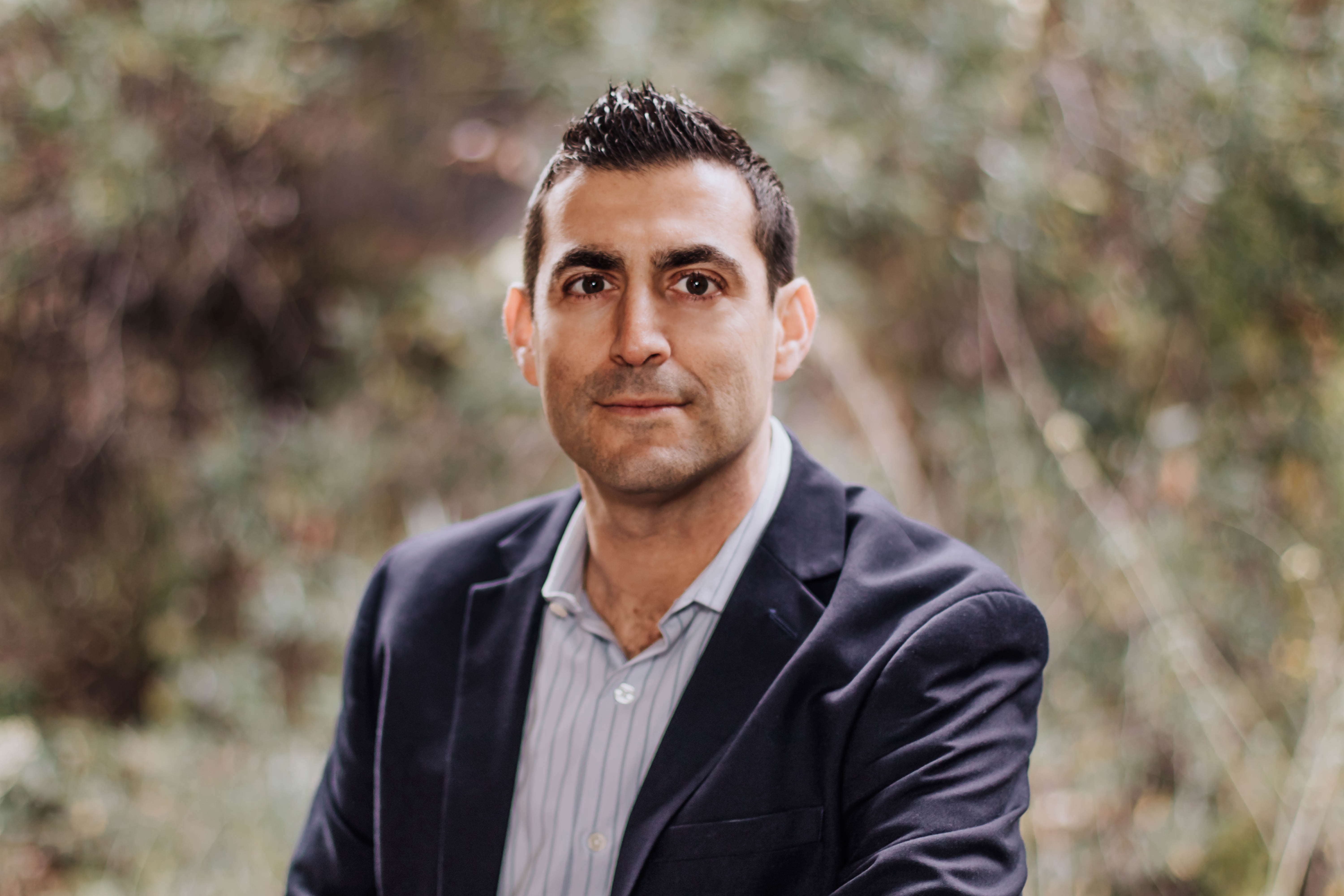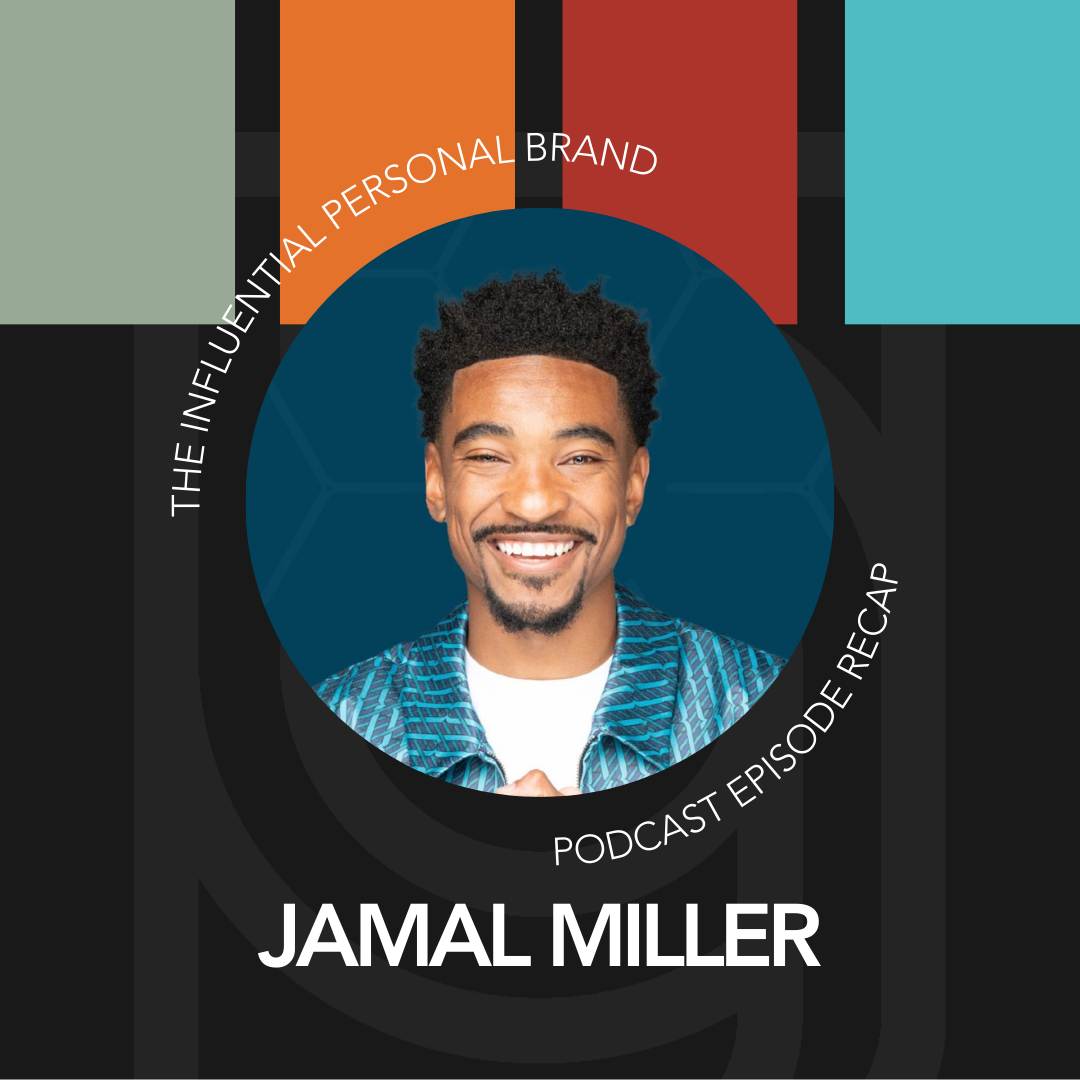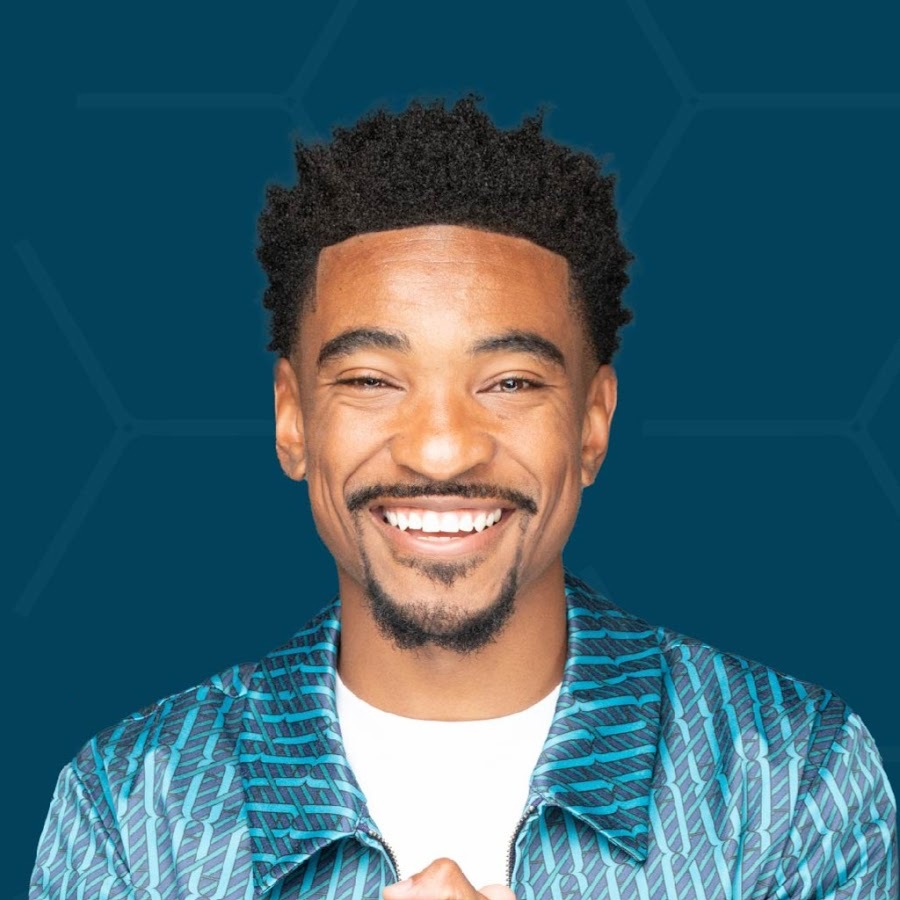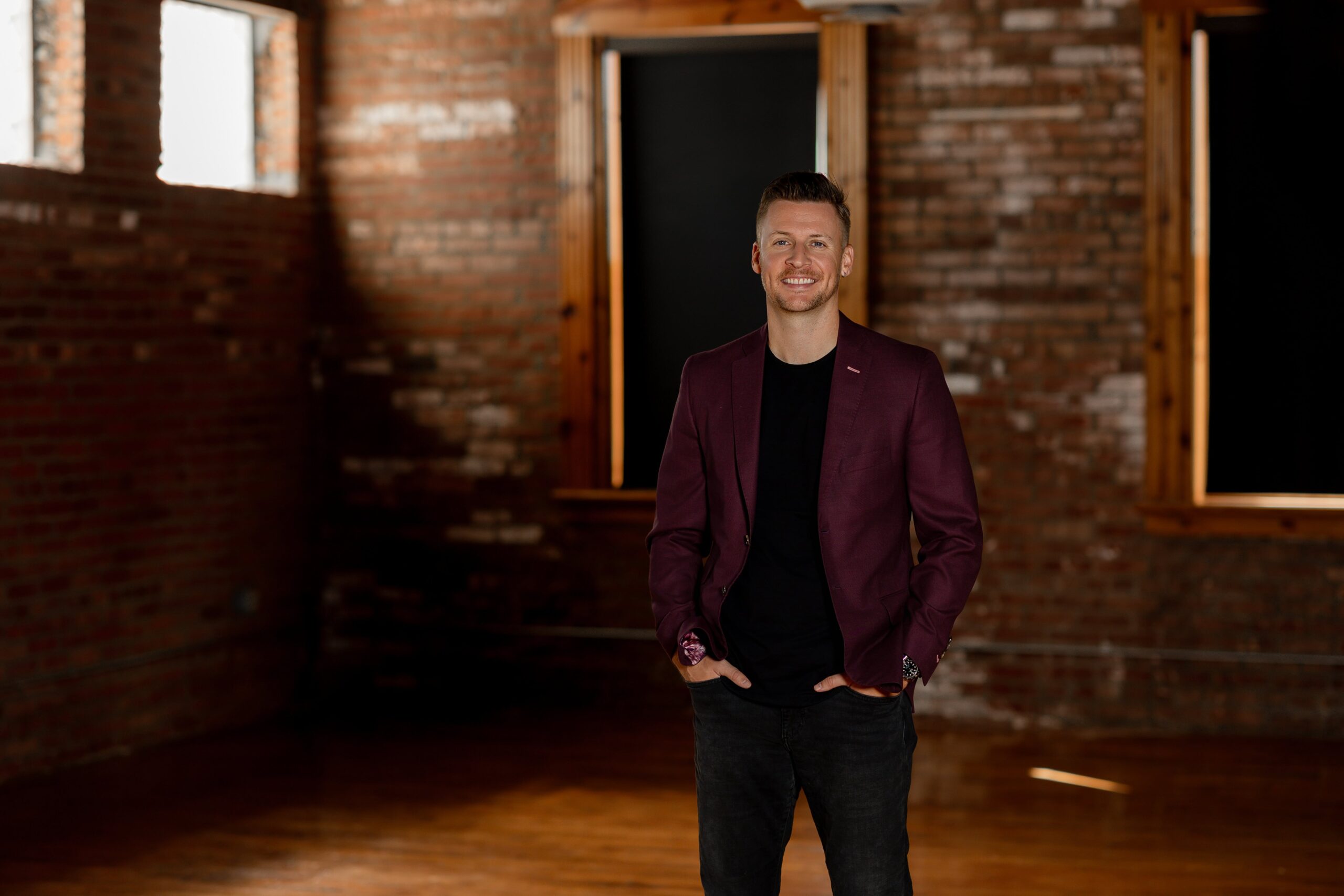RV (00:02):
I have to tell you that whenever I meet someone who is crushing social media, I’m always like, how do you do that? What is working? Dah, dah, dah, duh. Like, I’ve never, it’s one of the things, ironically of building a personal brand that like I’ve never been that good at naturally. We’re probably more well known for, for making a lot of money from a few, from having very few followers than we are from having lots of followers and reaching lots of people. And I was introduced to the guest, you’re about to meet Hala Taha from a couple really good friends that I I really admire. And I’ve heard several people say so many great things about her. I’ve gotten to know her. And she is amazing. She is super duper sharp, so she is known. Some, some people call her the podcast princess.
RV (00:48):
She’s the host of a huge podcast called The Young and Profiting, or the Yap Podcast, young and Profiting podcast, which is very regularly the number one business and entrepreneurship podcast across all different apps. So you’ll see her podcast charting. And then she’s also the, the founder and the CEO of Yap Media, which is both a podcast network with some of the biggest podcasters in the world are on her network. And then she also has, and this, you know, they’re like an award-winning social media, full service podcast, social media marketing agency for top podcasters, celebrities, CEOs. She’s had so many celebrities on her show as a guest. And she’s probably known. I mean, she’s also known for being a top top influencer on LinkedIn. So anyways, I was like, gotta have her on the show. Gotta learn from her. Gotta get free coaching for me at the same time for all of you. So, Hala, welcome to the show.
HT (01:48):
Wow, what an incredible introduction, Rory. I’m so excited for this conversation.
RV (01:53):
I, I seriously am so impressed by you. And you know, it’s one thing, there’s plenty of people with lots of followers, but when, you know, like Jenna Kucher or Julie Solomon or like the, like the Marshall Goldsmith, these people that you have worked with that, you know, and I know a lot of them, they don’t lightly throw around a, like, compliment behind the scenes. And so I was super impressed before I met you. The more I’ve gotten to know you, I’m just like, man, you are just so sharp. And I feel like we, we have very complimentary superpowers. So I wanna start with podcasting. Mm-Hmm. . Because that I feel like was the first world you dominated. I mean, you were on the cover of podcast Podcaster. Podcast magazine. And you know, I’m curious about today, you guys have a podcast network. Mm-Hmm, . So you run several of the top podcasts. What are some of the things that, that podcasters should be doing to grow their podcast today? And specifically, I think a lot of people are like, you know, they go, it’s too late to start a podcast. All the, you know, it’s all the, there’s so many big shows, I missed the wave. So I’m curious, is that true? And if not, you know, what can you be doing to kinda like catch up a bit?
HT (03:13):
Yeah, what a great question. So, first of all, you, it’s never too late to start a podcast. When I started a podcast six years ago, people told me it was too late. Now I’m literally at the top of Apple charts every single day, right? When it comes to growing your podcast, really what, what you need to think about is how do I create the least friction possible for people to subscribe to my show? Hmm. And when you think about that simple question, it’s really, I need to reach podcasters where listeners where they are, I need to reach these podcast listeners where they already are. I don’t need to try to convert them from some other platform to decide to listen to podcasts, to decide to listen to my podcast. That’s a really friction, full experience, but experience. Instead, I can guest on other podcasts like we’re doing right now, where people are already listening to a podcast app that they like, they’re already bought into the idea of podcasts, right?
HT (04:05):
I can do commercials on other podcasts and I can actually track and see based on the commercials that played another podcasts who went and then downloaded my show and started listening to my show. I can look at all the different podcast players out there and see what advertising opportunities are on all the different podcast players. There’s about 70 different apps. Apple and, and Spotify make up about 60% of the market share, but 40% of the market share is made up of 70 other apps that you can advertise on Android apps, castbox Google Play, you know, there’s a, a number of them you can think about. What are the ways that you can proactively influence the algorithms of the ranking charts so that you can rank and get discovered through ranking on Apple and Spotify. So you just have to keep thinking about how can I actually reach podcast listeners in the podcast apps? And a lot of it has to do with actually collaborating with other podcasters, which is why this podcast space is very collaborative and you hear a lot about like, swaps and trades, because the number of audience members who actually are active podcast listeners, they’re sort of finite and they listen to seven or so shows. So you wanna be one of those seven shows and you wanna get into that person’s ecosystem.
RV (05:16):
A amazing, so that, I think like you just gave, I think what’ll be an outline for the whole, like our whole interview together. ’cause I wanna dive deep on those, on those specific things, right? So, so first of all, part of what I want to know is how do you know if a podcast is legit? Hmm. Like what, what tool, what metric do you use? Like, you know, you can kind of go on Instagram and see how many views someone has on their reels, how many comments do they have? Like, you get a sense of like how real the whole thing is. Podcasting feels a little bit tougher to me. Mm-Hmm. just because it’s like, there’s, where do you look to see Yeah, the downloads, the ra, I mean, other than the top a hundred I think, which are in iTunes, like, how else do you know?
HT (06:05):
Oh yeah. So first of all, I just wanna call it out. There’s like a lot of fraud going on within the podcast industry. There’s a lot of people bloating their downloads using virtual machines to load their downloads. Something called coin marketing to blow their downloads. So a lot of fraud going on in the industry. One of the first things that I look to, ’cause I have to basically accept podcasters into my network. So I can just give you the process that I vet my own podcasters before I totally sign them. Basically what I do is I look at their, first of all, they’re Apple reviews. It is a huge red flag for a podcast to be like ranking or saying that they have, let’s say even over a hundred thousand downloads a month. Which, if you’re getting a hundred thousand downloads a month as a, as a podcaster, you’re really in the top 0.05% of podcasts, like four real.
HT (06:52):
It’s very rare for even like the biggest shows in the world to get like 700,000 downloads a month or a million downloads a month. So it’s not this thing where podcasters are getting a billion downloads per month or a couple million. And that’s a normal thing. That’s not normal in the podcast world. Actually, a real show with organic following a big show will have anywhere from a hundred thousand to maybe a million million five downloads a month. And that’s sort of the cap on the audio side, right? Like right now. So it’s like just knowing that what the realistic numbers actually are. Sure. looking to see on their reviews. If you are somebody who says that you get over a hundred thousand downloads a month and you don’t at least have two or so new reviews from the month, that is a huge red flag for me.
HT (07:33):
I go on people’s reviews and I see that the last review they had was last year. There’s no way you have active listeners in the last review you had as last year, right? So it’s like, if you go look at a podcast like mine, you’ll see that I have like dozens of reviews every month. Now if you have hundreds of reviews, that’s you prob somebody probably did a contest or it’s maybe not legit. But if you have dozens of like dozen or so real reviews every month, that shows me that you have an active audience, it’s really hard for every like 10,000 listeners you get a review or even more, right? So it’s really rare to get a review, but if you have none, that’s a huge red flag. Okay. So that’s number one. Number two is there’s different rankings. So there’s Chartable podcast rankings, there’s Apple, there’s Spotify, those are the main three.
HT (08:16):
Apple and Spotify are trending charts that are gonna show you who’s getting new downloads every day and new subscribers every day. And the chartable charts are actually download and reach charts. So if you wanna understand somebody’s actual reach, you wanna see their chartable rankings and see what is their reach on a global level, on their category level. And then you’ll get an understanding of how big that podcast is out of all the podcasts in the world. So like, if you go on Chartable, I’m in the top 1000 of podcasts and most of the podcasts in my network are in the top 1000 of podcasts. The bigger you are, you might be the top 500, and that’s actually a direct relationship to your IAB certified downloads across all the different apps. Not just Apple, not Spotify, all the different apps. So at one point when I was not huge on Apple, I would rank really high on Chartable ’cause I’m the biggest podcaster on castbox, but I had a very little following on Apple, so I wasn’t even ranking on Apple.
HT (09:08):
So Chartable gives you an idea of actually how many downloads you have, no matter what app it is, and is directly correlated to your reach as a podcaster. So I look at Chartable downloads, then I look at Apple and Spotify to see like if they’re trending, if they’re growing, if they’re hot, or if they’re sort of like outdated. And then the other thing is to look at the timing in which the person started the podcast. If you are a podcaster like Louis Howes or Jordan Harbinger, or somebody who started Amy Porterfield, Jenna Kutcher, some of the people in my network, they started a long time ago, they’re likely to have more organic downloads than a podcaster that started even three years ago. That’s ranking at the same level because they’ve got all these like, legacy subscribers from when there was no competition. So just like so many different factors to look at.
HT (09:51):
The other thing I I look at is to see like, how are their reels performing? Do they get real comments on their reels and social media? Because all of that is correlated. It’s, it’s pretty unusual for somebody to have like a huge podcast but then have very little engagement on other channels. That usually signifies to me that either they got really lucky, they’ve got an awesome podcast topic that everybody’s searching for. In that case, it is legitimate that they could have no so social following, but if it’s not it, that seems very suspicious to me that they would suddenly have a podcast following, but no other following on other platforms. Mm-Hmm.
RV (10:22):
, although there are a few of those, right? There are
HT (10:25):
Like, there
RV (10:25):
Are like, like there are, there are a few of those. So that’s interesting. Okay. So charitable is where you’re looking. And just for those of you that are listening, , it is funny you mentioned Lewis Howes. I literally, the other day, like two days ago, he texted me something with IAB, he said, he said, what are their IAB downloads? And I was like, what is IAB? Like I had never heard that term , so I forget what it stands for, but that’s like in the world of advertising, that’s like the, the, the actual gold standard of like, this is the actual number of downloads that you can get paid for, right?
HT (10:59):
So IAB is basically this bureau that determines what is the standard download, and then all the platforms sort of align to the standard to count what a real download is. Mm-Hmm. to protect advertisers, basically.
RV (11:13):
Yeah. Okay. So, so I wanna talk about advertising. So it’s interesting you said to grow your podcast. You run, I forget what you called it. I don’t think if you said commercials, but you, but you know, more or less you’re, you’re running ads on other people’s shows. Yes. so how do you go about doing that? So let’s say you find someone in your niche, right? Like, let’s say you’re a, you know, whatever, like a, a lifestyle influencer who does like home decor or something. Do you go, you basically go on chartable or listen notes, you figure out, here’s the podcast I want to be on, and then you just like DM the person and say, what are your rates? Or like, is there a more formal way of going about that?
HT (11:57):
There’s lots of different ways to go about it. So now there’s a new platform called Swap fm. There’s also called a pla a, a platform called pod, which was like a legacy platform doing similar things where you can basically solicit that you’re, you, you want to buy commercials on other podcasts and set up trades on pod, you buy the commercials on swap fm, you set up trades if you want to just reach out to somebody cold what I would do is look up somebody in your category or just anybody who you know has a podcast that you feel like has a relevant audience for you, reach out to them on Instagram. You can, you know, get their email from LinkedIn, like scrape their email if you want, reach out to them on LinkedIn. And then you basically have to plan what the swap is.
HT (12:40):
So usually it’s an equal impression swap. You figure out how many downloads do you get a month, how many downloads do I get a month? Again, you wanna make sure it’s a legitimate podcast so that you’re not trading with somebody who has like a fraudulent audience or doesn’t really have an audience and that it’s a fair trade. So you might say like, Hey, I’m gonna trade 50,000 impressions with you this month. Now Jordan Harbinger is one of my mentors, and we do trades all the time. His show is like five times bigger than mine. He’s one of these legacy podcasters. Even though we both rank at the top of the charts, again, those are trending not based on reach. So, hi, even though we’re ranking the same, he gets five times more downloads than I do. So when I do one commercial for every five commercials I do for him, he does just one commercial for me.
HT (13:24):
And we do something called an impression based swap. So even if you are a smaller podcaster, you can actually trade up with bigger podcasters by doing more commercials for them. So the impression amount doesn’t have to be only what you can achieve. You basically figure out how many commercials do I need to run in order to hit the impressions that I wanna trade. And so you, you do those types of commercials. Then on Chartable you can set up something called a smart promo campaign where basically you just set up a pixel on your hosting provider, same with the other podcaster. And you can basically see who went and listened to the podcaster’s commercial and then came to your podcast and downloaded your podcast. And you can see how many downloads you got from that trade. It’s not directly correlated with subscribers, but it’s a good indicator of who came and subscribed to your show as a result of the trade. And then the shows that do well, you wanna lean in and keep doing trades with them until you don’t see that return anymore.
RV (14:21):
Fascinating. Okay. So that’s what I was gonna ask you. So you basically, there’s a, you said on the smart pro promo campaign inside of Chartable, there’s some type of a pixel that you set up that like an auto, like an auditory pixel somehow?
HT (14:34):
Yeah, basically it’s like on the, the episode itself I, I don’t recall if it’s like actually setting up a chartable pixel across like all your hosting or the episode itself. I’m not, I don’t remember. ’cause I don’t haven’t done this in a while, like myself, I have a big team now. But yeah, you set up a pixel and it basically just tracks the episode and then you have all the conversion data.
RV (14:54):
Okay. So, but when you were starting, you would do this and then you would see, oh, this podcast that I either was on or like that I bought, I either did a swap or I bought a commercial on their show. We could, you could track that with somehow this pixel and then go, oh, I wanna buy more ads there until that, just, until that starts to dwindle
HT (15:13):
Basically. Totally. And now Swap FM allows you to do this in a way less technical way. So that’s why I was saying like you could also just use swap fm now to do it, which is like, I’m getting my whole network up on swap fm. So we could just do this internally really seamlessly.
RV (15:27):
Uhhuh. Yeah, that’s so, that’s so good. The so now when you, once you, once you, once you start to grow, like how much do you charge for podcasts? So this is another thing that really comes up is like, when, when is your podcast big enough to charge advertisers? How much do you charge? Where do you find the advertisers? Like do you know that, that, that whole thing and like, you know, kind of give a maybe if, if you’re able to give like a small, like a smaller show just starting out, like here’s when you’re first ready and then over time they become, they, they probably join like a network like yours. Right? And that’s part of what you, you handle. So give us like the small and the large short term, long term.
HT (16:16):
Yeah. So as like a individual podcaster, you can start at any point to try and get direct sponsorships. There’s no limitation, right? Especially if you have a really niche audience. Like let’s say you’re a, you’re a lawyer and you’ve got an audience, and even if it’s a hundred lawyers are listening to every episode, you can proactively reach out to LegalZoom and try to get a sponsorship because even though you’ve got a small audience, it’s exactly who they’re targeting. So they may wanna work with you and then advertise on your podcast or socials and whatever else as like a micro influencer of that specific niche. So the more niche you are, the more that you can get started on monetizing, I believe, right away. Okay. Got it. Now if you have a broad audience, typically if you, if you wanna get advertisers, you’ve gotta really wait to getting about 20,000 downloads per week or about 80,000 downloads a month.
HT (17:08):
That is typically the first step of you getting sponsorships would be to apply to a podcast platform like advertise, cast or gumball to try to do your sponsorships direct. And the limitations of that platform is 20 to 25,000 downloads a week for you to be accepted to start getting direct deals from a podcast. They call themselves a network where they just basically accept any show that gets that amount of downloads and they’ve got like hundreds of shows and they’re just this like middle man between agencies and brands. And if you do well for them, they’ll get you a lot of deals. So like the first step is to get that many downloads and then plug in if you have an internal team to, to like an advertised cast or gumball and start doing direct outreach that is monetizing on your own. Now, the next level would be to join a network like mine, whose job is to not only get you sponsorships, but also to host your show on their hosting provider to flight your ads and to actually grow your show through growth tactics and swaps and, and whatever it is.
HT (18:12):
So a network has other incentives. They’re, they’re exclusively driving your brand deals negotiating on your behalf, soliciting directly and through agencies on your behalf. But then you’re also hosting their show, growing their show flighting their ads and doing other services for them. So a network is a more like exclusive thing. And typically, you know, for my network, for example, we’re looking for people with 150,000 downloads per month or more, maybe a hundred thousand downloads. Podcasts is actually getting there’s been a big Apple update. So a lot of people’s downloads on Apple have actually shrunk 30 to 40%. So our tier to let you in the network has significantly lowered because in November, most of the legacy podcasters out there on Apple lost 30 to 40% of their downloads. So now in general, standards are a little lower in terms of download counts.
RV (19:04):
So there was just like an Apple update, just like a Google SEO update and it just crushed everybody
HT (19:08):
Down. There was an Apple update in November where basically there’s no more auto downloading if somebody has not listened to your show in like six months. So a lot of these older podcasters that had these legacy audiences, it turns out there was just a lot of auto downloads happening. Mm-Hmm. And now it’s better for advertisers because it’s actually real listeners who are active listeners of the show, but these legacy podcasters thought they were getting a million downloads a month, turns out they might be getting 500,000 or 600,000. And so there was a big, big impact in the industry and caused a lot of like back and forth with advertisers because of the, the download discrepancies.
RV (19:41):
Mm-Hmm. . And then so I love that. So thank you so much. Like, that’s so helpful just to kinda like see what the trajectory is there and yeah, and I know some people that have small shows, like you’re saying, that are niche audiences where they were able to get a flagship sponsor for like a hundred thousand dollars a year and they sponsor the podcast, their events, their email list, their blog, their social, and it’s like a platinum sponsor for like every piece of media that, you know, this creator Yeah. You know, makes, so that’s, I’ve, I’ve, I’ve heard of that before. If you are going to pay for commercials, okay, so let’s say that you go, okay, I wanna buy commercials. You mentioned pod,
HT (20:26):
Pod yeah, pod you could also use advertise, cast gumball, the other platforms that I was mentioning as
RV (20:33):
A, as a, as a buyer. Yes. And then roughly like, is there a, is there like a rough budget that you would apply or, you know, is there kinda like a minimum that you have to spend? Or like how do you even come up with
HT (20:46):
That number? It’s just based on the size of the podcast. So all advertising and costs is very standard on the audio side of the podcast industry. So it’s all CPM based, it’s cost per 1000 downloads. So, you know, if you’ve got a show that gets a hundred thousand downloads, you wanna buy Midroll on that show, it costs $25 per 1000. You’re spending $250 per commercial on that show. And typically these shows will have like a three flight minimum just so that they aren’t only getting paid two 50 to do a commercial. Podcasters are hesitant to just do like one off deal. So it’s like there might be a three flight minimum. So you might have to pay $750 for three commercials on that show.
RV (21:27):
Uhhuh I think that,
HT (21:30):
I think I did the math wrong. I think it’s $2,500. The commercial, not two 50.
RV (21:34):
You’re saying $25 per thousand?
HT (21:38):
Yeah, 25 times a hundred. So that would be 2,500 per commercial.
RV (21:42):
Yeah. So se so you’re saying, so then it would be 7,500 bucks is what you would pay to have, like,
HT (21:49):
And you’d get 300,000 impressions total.
RV (21:52):
Okay. Yeah, the math, there’s the zeros, it’s like the zeros, it’s
HT (21:56):
. I can say it over again if you want. So that we have No, that’s
RV (21:59):
Okay. They can, we can go, we can go back and rewind. I, I’m okay. I, I’m, I’m following you. So what is dynamic insertion and explain to us what, what is dynamic insertion? How do you do it? Why does it matter? And if you don’t use dynamic insertion, then what, what, what, what happens then?
HT (22:23):
Sure. So when podcasting first came out and there was advertisers, people would bake in their ads. What does that mean? You would actually record an ad and it would be embedded in your podcast episode. Now, as all these podcasts came out and they put out episode after episode, what they found out is that a lot of people will go back and listen to older episodes. And so there’s all of these downloads that people are listening to, but they’re listening to old commercials from sponsors that are no longer actually paying the podcaster, right? So these baked in spots caused a problem because you were unable to monetize your podcast fully based on the new people that were listening. So dynamic ad insertion fixes that problem. So basically if I get a hundred thousand downloads per month and I get an advertiser to sponsor my show, that means that the ad will play across every single episode. No matter if it’s a new episode or an old episode, it will play across the podcaster’s entire catalog. So every week I have sponsors and I record my commercials, and the commercials that I record get played across every single episode, no matter if it’s episode one or episode 400 on my podcast they hear the same commercial. So that’s basically what it is. It’s just infl the commercial across the entire catalog.
RV (23:40):
How do you set it? So like, what does it take to set that up? Because like when you first start, you go, oh, I’m just recording on my microphone, I’m uploading, you know, I’m uploading a file and we’re off and running. But then in order to get dynamic insertion going, what, is there like a tool that you use for that?
HT (23:54):
Yeah, so there’s two hosting platforms that allow you to do this. Primarily it’s megaphone and art. 19, if you’re on those platforms, you’re like basically getting ready for monetization. You’re a podcaster who’s getting like 80,000 plus downloads a month, like, and you’re basically ready for this step. So moving to a hosting provider that allows you to do dynamic ad insertion and allows you to plug into a programmatic advertiser like Spotify ad network where you basically can have prerecorded commercials play on your podcast. Okay. So the way that you set it up is you basically have to decide where you’re going to be inserting all of these dynamic ad commercials. So for example, a typical podcast might have like two pre-rolls, maybe two mid roll breaks with two ads each, and two post rolls. So all those insertion markers need to be added in your hosting provider.
HT (24:42):
Then once you get hosted ads, you have to record those commercials, and then you basically flight them in the insertion markers that you’ve set up in your hosting provider. And then for any open inventory you can basically put that up for programmatic ads to say Spotify ad network. If anything’s open and it’s not filled with hosted ads, they’ll play a prerecorded commercial in that spot if they find a brand that matches. So that’s what podcasters are doing. They’re basically setting up insertion markers. They’re getting their hosted ads either from their network or directly, they’re placing the ads in the proper insertion markers, and then anything open they’re leaving for programmatic ads if they’ve turned that on.
RV (25:23):
Yeah. So I’m gonna officially call this that you who are listening have had your mind blown many times, and your brain is gonna burst if we keep going. And I think this is the spot to land. But I wanna, what I wanna say is, you see what I meant when I told you I was impressed? Like Hala has such a defined system and just a deep knowledge, right? This is a deep expert of somebody who understands algorithms and platforms, and we are just talking about podcasting. Like LinkedIn is, I would, is maybe arguably even your bigger, your, your, your bigger specialty. Maybe we’ll beg to have you come back on the show at some point, but like and then also, you know, Instagram and the other, other platforms. But so if one of the things can, can you tell us Hala just really quick about so you have your, you have your podcast network, right?
RV (26:18):
And I, I’m gonna, I’m gonna tell people what to do at some point if they want to get in touch with you. In fact I’ll go ahead and share that now. So what I want you all to do, if, if you wanna get in touch with Holla, you know, you can reach out to us in info@brandbuildersgroup.com and I just want you to put Yap in the subject line, YAP for Young and Profiting. And then it’s possible that you would go, Hey, I want, you know, maybe you wanna apply to be a part of her network. But the other thing that she does is that she does high-end, sort of white glove, full service social media management. Mm-Hmm, . So can you just talk like, briefly about what that is that you guys do for people on, on, on that side?
HT (26:59):
Sure. So like Rory said, I’m the podcast princess, but I’m also the LinkedIn queen, so I know everything about that platform. I’m running the number one LinkedIn marketing agency. I run most of the influencers on LinkedIn right now and has have been responsible for growing dozens of influencers on that platform. So essentially I have a white glove, social media and podcast agency. We stand up a dedicated team for all of our clients, which includes an account manager, a ghost writer, a graphic designer, a video editor, a community engagement specialist. We do sales funnels on Instagram and LinkedIn, and that is definitely our secret sauce. So we’re doing dms all day to try to drive growth and conversions for our clients. Most of my clients are in this space of being like an author, a speaker, a big entrepreneur, a coach.
HT (27:47):
They’ve got courses. This type of a person does really well with us. Anybody who basically has a converting offer all 10 x anything that they’re doing, especially on a platform like LinkedIn. And then we also are experts in creating podcasts, growing podcasts, and then eventually monetizing podcasts including YouTube and simulcast. So those are our, like, main areas is that we’re the number one LinkedIn marketing agency, also crushing it for people on Instagram podcasts and YouTube. And we do everything end to end where we basically have like a very intensive onboarding process. We’re managing your brand, your voice, your graphics. I have an amazing video team, creative team, and essentially everything that you guys see, like on my platforms, it’s like basically my team doing it and we do it for other people. So it’s, it’s incredible. I love my team. We’ve got a huge team, 50 people plus around the world. And we’d love to speak
RV (28:42):
To you. And I think, and, and what I would say there is, is going, it’s also like, you know, you’re, it’s an investment in a team and, but rather than having to hire and manage a team yourself, you can just hire Holla and her team, and then you, they go build the team. And so if you’re in that, if, if you’re in that mode of like, someone make my pain, go away, like, just deal with all of this, and you go, I’m, I’m serious, you know, I’m ready to invest. So email, email us info at bramble, just group.com, put, put YAP app in the subject line. Or you can reach out to Holla, holla and tell her that you found our found, found us here, whatever. But that is something I wanna make you aware of. ’cause That’s not what we do at Brand Builders Group, right?
RV (29:24):
Like we are a strategy firm and we get asked a lot about execution and social media is a real big pain point. So that was part of why I wanted to have her on the show. And I wanted to just give you a taste of like, you know, the, the way, the way that, the way that I talk about like book launches and speaking, as you can clearly see, it’s the way that this woman talks about podcasting and social media. I mean, it’s, it’s deep, deep, deep expertise. So holla, thanks for the time. I mean, you blew my mind. I, I’ve
HT (29:52):
Podcasting thanks
RV (29:53):
For a long, long time. So I just am really, you know, grateful to know you and grateful for your wisdom and you’ll look forward to staying connected.
HT (30:01):
Likewise. I really enjoyed my time with you. Thanks Rory.

